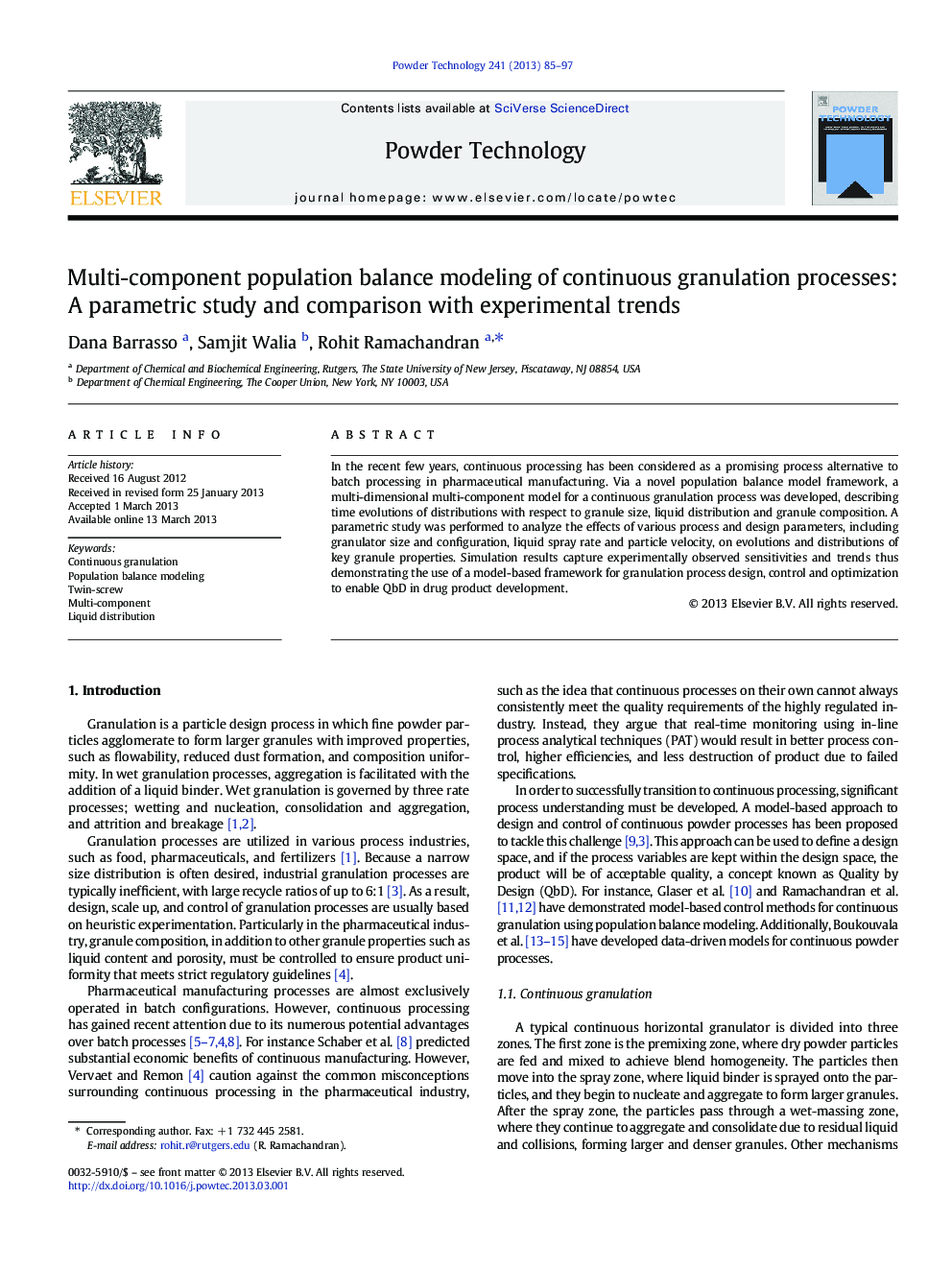| Article ID | Journal | Published Year | Pages | File Type |
|---|---|---|---|---|
| 236402 | Powder Technology | 2013 | 13 Pages |
In the recent few years, continuous processing has been considered as a promising process alternative to batch processing in pharmaceutical manufacturing. Via a novel population balance model framework, a multi-dimensional multi-component model for a continuous granulation process was developed, describing time evolutions of distributions with respect to granule size, liquid distribution and granule composition. A parametric study was performed to analyze the effects of various process and design parameters, including granulator size and configuration, liquid spray rate and particle velocity, on evolutions and distributions of key granule properties. Simulation results capture experimentally observed sensitivities and trends thus demonstrating the use of a model-based framework for granulation process design, control and optimization to enable QbD in drug product development.
Graphical abstractA multi-dimensional population balance model is developed for a continuous twin-screw wet granulation process, taking into account distributions in particle size, liquid content, and solid composition throughout the granulator. A parametric study is performed to demonstrate the effects of poor liquid distribution, API–excipient interactions, and process parameters such as the liquid-to-solid ratio. Results show a qualitative agreement with experimental observations.Figure optionsDownload full-size imageDownload as PowerPoint slideHighlights•A population balance model for twin-screw wet granulation is presented.•The model captures distributions in particle size, liquid content, and composition.•A parametric study is performed to demonstrate the effects of process parameters.•Results are qualitatively consistent with experimental observations.
